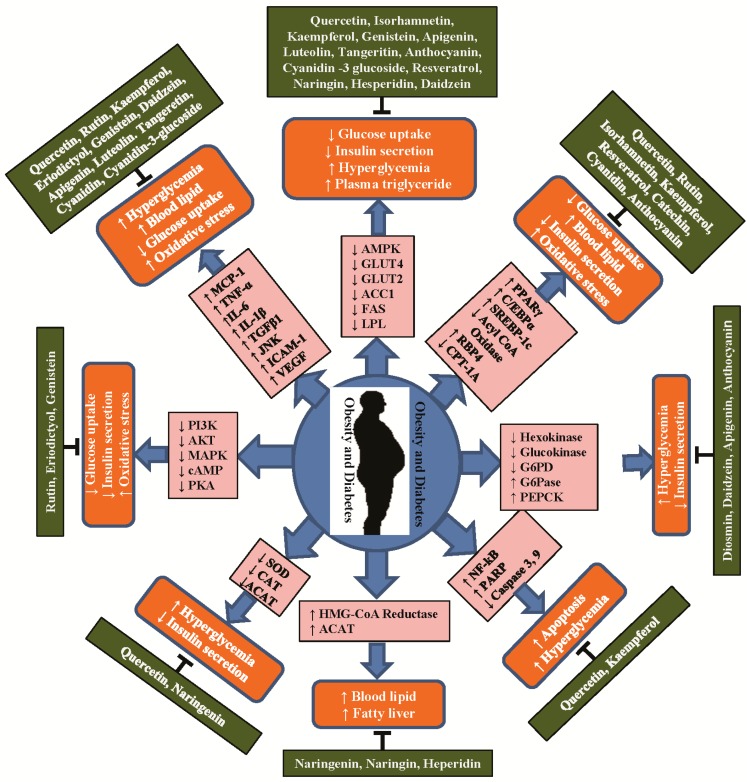Figure 3.
Schematic presentation of molecular functions of different flavonoids with anti-obesity and anti-diabetic effects. Obesity and diabetes stimulate increased or decreased production of inflammatory cytokines, expression of different metabolites, and intracellular cell signaling. Flavonoids showed anti-obesity and anti-diabetic effects by activating or inhibiting different cytokines, enzymes, and metabolites to prevent inflammation, oxidative stress, and metabolism to protect against obesity and diabetes. MCP-1: monocyte-chemo-attractant protein-1; TNF-α: tumor necrosis factor alpha; IL-6: interleukin-6; IL-1β: interleukin 1 beta; FFA: free fatty acid, IRS1: insulin receptor substrate 1; PI3K: phosphatidylinositol 3-kinase; AKT: serine/threonine kinase; FA: fatty acid; IGT: impaired glucose tolerance; PARP: poly(ADP-ribose) polymerase; BCl-2: B-cell lymphoma 2; Bax: Bcl-2-associated X protein; Bak: Bcl-2 homologous antagonist/killer; Caspase 3: cysteine-dependent aspartate-directed proteases 3; PPAR γ: peroxisomal proliferator-activated receptor gamma; SREBP1c: sterol regulatory element binding protein-1c; LPL: lipo protein lipase; AMPK: 5′ adenosine monophosphate-activated protein kinase; HOMA-IR: homeostatic model assessment for insulin resistance; HbA1c: hemoglobin A1c; GLUT4: glucose transporter 4; G6PDH: glucose-6-phosphate dehydrogenase; HMG-CoA: 3-hydroxy-3-methylglutaryl-coenzyme; ACAT: acyl CoA: cholesterol acyltransferase; G6pase: glucose-6-phosphatase; cAMP: cyclic adenosine monophosphate; PKA: protein kinase A. (↓) Decrease, (↑) Increase.

